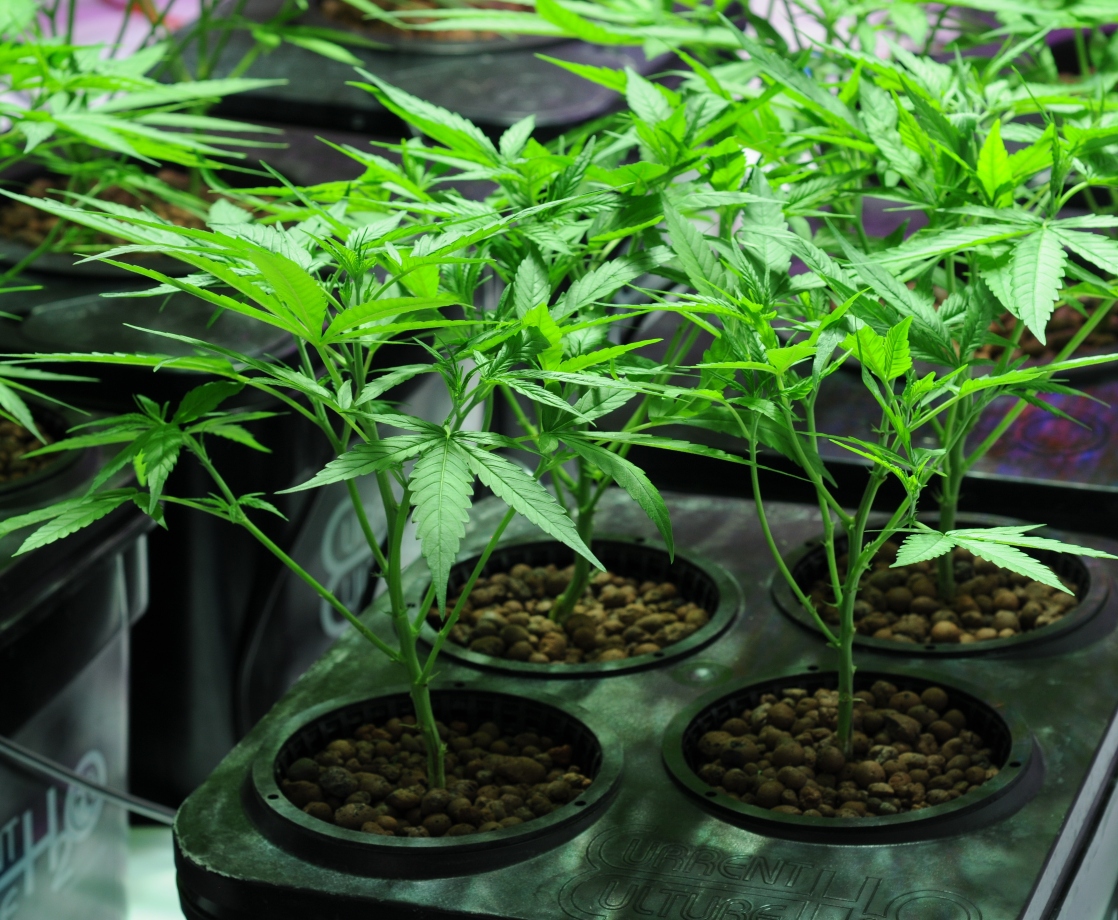For any beginning cannabis gardener, planning your first home grow can be a daunting experience. With so many different strains and cultivation methods to choose from, starting your own garden can feel like learning another language. But with a research and planning, it will be easier to determine exactly what combination of techniques and equipment will suit your situation and skill set.
One decision you’ll want to make early in your endeavor is whether you want to cultivate your plants hydroponically or in soil. Both methods have their advantages and disadvantages, and each is staunchly vouched for by a loyal cadre of experienced and talented cannabis growers. Let’s explore the pros and cons of each.

Pros and Cons of Cultivating in Soil
For a healthy cannabis home grow, you must provide an environment where the roots can receive a steady supply of water, nutrients, and oxygen. The simplest way to do this is with soil, either in a container or the ground, that is light and porous with plenty of organic matter to provide nutrients and good drainage. Outside, mix plenty of good quality compost or other organic matter into garden soil, or you can create raised beds to fill with additional organic matter and soil amendments.
To grow cannabis in containers, a good commercial potting mix that drains well and is slightly acidic is the best bet for beginning home gardeners. Popular brands from a garden center will work fine or you can visit a specialty retailer, such as hydroponics shops, for organic potting soils blended specifically for cannabis cultivation. Most home growers use either sturdy plastic containers or special fabric grow bags to hold the potting soil.
Cultivating plants in soil is a great option for cannabis gardeners just starting out because it is far more forgiving than hydroponic methods. Plenty of veteran cultivators prefer to grow in soil over other methods they consider less natural. The soil acts as a buffer for the plant’s roots, which can help protect them from issues such as over-fertilizing or extremes in acidity or alkalinity (pH). Soils with plenty of organic matter will retain water and slowly release nutrients over time, which also helps mitigate some of the common mistakes of beginning gardeners.
Growing cannabis in soil does have a few disadvantages, however. The natural environment for plants also happens to be an inviting home for pests and pathogens that hydroponic grows don’t have to deal with. So, a bit more vigilance and remedial action is required to ensure your plants stay healthy and produce the best bud on the block. Hydroponic systems also lend themselves well to automation, so growing in soil can require more labor.

Pros and Cons of Hydroponic Home Grows
With a hydroponic home grow system, an inert growing medium such as clay pellets, rock wool, or coir (also known as “coco” or shredded coconut husks) is used as the growing medium for the plants’ roots instead of soil. Sometimes, no medium is used at all, and the roots are left to dangle free, reaching into or automatically misted with a nutrient solution. Roots generally get more exposure to oxygen, but without firm ground to anchor themselves in, plants grown hydroponically are normally supported with trellising, or criss-cross structures used to guide the growth of plants, or other means.
Hydroponic home grows can utilize one of many different systems, all with the same goal of providing the roots with water, nutrients, and oxygen. Drip irrigation employs plastic tubing to deliver water and nutrients directly to the base of each plant. In an ebb and flow system, nutrient solution periodically floods the root zone, watering and feeding the plant before draining away to expose roots to fresh air. In deep water culture, roots are suspended in an aerated nutrient solution contained in a light-proof bucket. Aeroponic systems use misters to provide moisture and fertilizer directly to the roots.
Hydroponic gardeners often automate their home grows, allowing timers and pumps to do much of the work needed to water and feed plants. But, the lack of attention automation permits can become a drawback in the event of a power failure. With improved exposure to air built into hydroponic grows, roots can quickly dry out if the system breaks down, ultimately killing the plants. The exposed roots are also more sensitive to over-fertilization and unfavorable pH levels, which can harm plants or make it more difficult for them to obtain nutrients. If they’re given the same input of light and fertilizers, hydroponic cannabis plants will generally grow faster and yield more flower, but flavor and smokability can be sacrificed if care is not taken to carefully flush nutrients from the plants before harvest.
What Method Should You Use for Your Home Grow?
Ultimately, it’s up to each cannabis gardener to decide which home grow method will work best for their situation. But if you’re a beginning cultivator, it’s probably a good idea to try soil first because you’re more likely to succeed. Then, once you’ve learned the basics of cultivating good herb, you can decide if you’re up to the challenge of growing hydroponic weed from the comfort of your own home.
Follow AJ Herrington on Instagram











